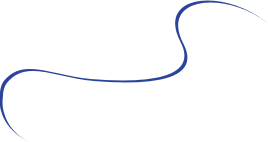 |
|
| Science education | |
| Video |
SCIENCE EDUCATION RESOURCES
The language of science: the measurement
by formaScienza
Objective: make the students aware of the necessity of introducing a scientific language. Make the students think on the meaning of the act of measure and on the role of the instrument of measure.Age: 11-14
Equipment:
- Pens and papers
- Small balls
- Chronometer
- Ruler
- Analogical thermometer
- Digital thermometer
- Analogical balance
- Digital balance
The conductor states that the first step to make predictions is to have an adequate language. If he said that the object touched the ground 'immediately', none would have considered this a prediction. To call it 'prediction', he had to say '0.6 seconds'. If the object fell in 0.5 seconds, all the students considered the prediction a mistake.
At this point the conductor introduces a game. Students are invited to write on papers:
- a big and a small thing
- a heavy and a light thing
- a long and a short thing
- a speedy and a slow thing
Papers are collected and red. The conductor reads the couples of things and shows that for example a car can be slow or speedy (with respect to an aeroplane of a bicycle), a truck is big with respect to a car but small with respect to a mountain, etc. (If there are no contradictions in students' papers, there will be in conductor's paper). The conductor observes that common language is ambiguous. But there is one thing that is not ambiguous: the comparison between two objects. So an idea can be to have a sample with which we can compare the objects.
Measure of length
For example for length one can use a foot, but a foot of who? We can consider a famous statue and say: this is the foot. But we can use the meter as well. Using a foot or a meter or any other thing as sample to make comparisons, we invented the measure and the unit of measurement. To measure means to compare with a unit of measurement. This language is no longer ambiguous, at least at a first approximation.
The unit of measurement must be comfortable: it can be changed if a conversion factor is defined. The millimeter for paper's thickness, the kilometer for distances between towns, the light year for distances among the stars. Measure of weight
The previous discussion is repeated with heavy and light things. The conductor shows different couple of objects asking to students which is the heavier. The answer is easy until the objects are very similar: in this case the conductor says to the students that our senses are no longer sufficient and we need an instrument. An instrument is an object that does nothing but make a comparison, amplifying if necessary a difference too small to be directly perceived by our senses.
In the case of weight the conductor asks what is the instrument to be used. The answer 'the balance' must be discussed: what balance? How does it work? What is the sample with which we are comparing? This questions lead the students towards the pan balance, the first balance that has been built. In this type of balance we use weights (i.e. object of known weight) that we put on a pan, while the object to be measured is on the other one.
For example we try to measure the weight of an apple. The conductor proposes to student a mental experiment. We put the apple on a pan, that goes down. Then we put a 50 g weight on the other pan, but nothing moves. What is the weight of the apple? More than 50 g. We put another 50 g weight. Again nothing moves. What is the weight of the apple? More than 100 g. Another weight, again nothing moves. What is the weight of the apple? More than 150 g. Finally we put another weight and the pan with the apple goes suddenly up, while the other one goes down. What is the weight of the apple? Less than 200 g, students will probably say. Someone will add: but more than 150 g. Then we imagine to have smaller weights, of 10 g each one, and we repeat the proceeding. We have for example that the weight of the apple is between 170 g and 180 g. We will take smaller weights and so on. What is the end of this measurement? We will necessarily stop at some point: we will have the measure with an incertitude: the instrument can not go above its sensibility. It is valid for any instrument.
The conductor introduces the symbol ±. Students are invited to write the following measures with the respective uncertainties:
- length of a desk
- weight of a pen (with analogical and digital balance)
- body temperature (with analogical and digital thermometer)
Measure of speed
The students are invited to list some instrument to measure the time. He discusses of this with students.
Then he throws two small balls on a plane, once at a time. He asks to students which is the faster: while the two speeds are very different, the answer is easy. When they are similar, the students can not answer. The conductor asks to students what is the meaning of measuring a speed. In order to lead them to the answer, he proposes to throw the balls together: in this case it is immediately perceivable which is the faster. The students realize that, as in a car race, the way to know which is the faster is to put a finishing line. That means that the speed is larger if the same space is traversed in a smaller time. The speed is measured measuring a space and measuring a time. Speed is a derived physical quantity.
